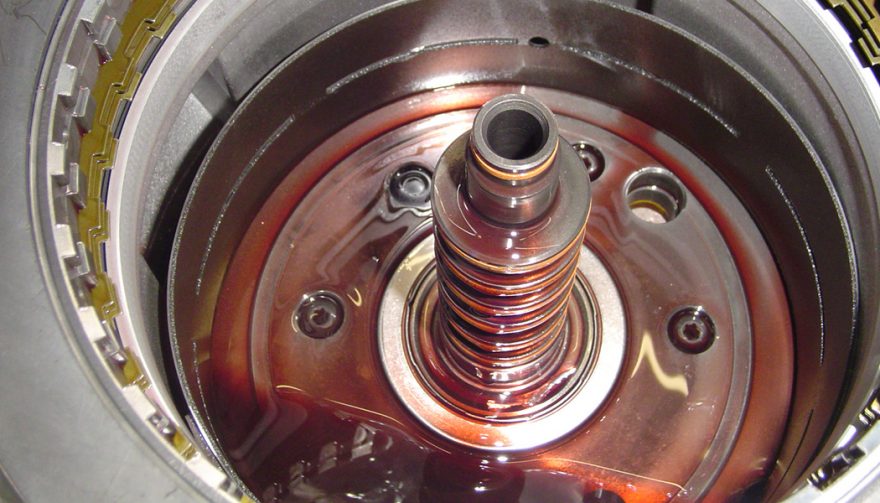
Some owner's manuals will say your transmission fluid will last the life of your car. That sounds vague.
How Often Should I Change My Transmission Fluid?
Has your transmission been acting up recently? Have you found yourself recently asking, “How often should I change my transmission fluid?”
The first thing anybody does when their automatic transmission acts up is to have the fluid replaced. The second thing they do is ask their mechanic, “How much longer do you think it will last?”
Transmissions are expensive, and by the time they act up it’s too late to forestall the inevitable big repair bill.
So, making a last-ditch effort at car maintenance does not alleviate the guilt of neglecting the poor transmission. Neither does the ailing transmission appreciate the attention and suddenly fix itself.
How Often Should Transmission Fluid Be Replaced?
It depends whom you ask. Some owner’s manuals say the transmission fluid is good for the life of the car. That’s vague.
How long do you expect to have the car? The answer varies as widely as the number of people you could ask.
Even if you don’t maintain an automatic transmission, it would probably last until 100,000 miles. That’s not good enough if you don’t want to risk a breakdown before then.
If you are one of the many people who keep their cars for 200,000 miles and beyond, then you probably want to increase the chances of going the distance without spending big money on an overhaul.
Ask a Taxi Owner
You might be amazed how some people ignore the factory recommended maintenance schedule and over-maintain their vehicles. The people who expect to get 500,000 miles of use from their cars, like taxi owners do, spend more on maintenance and less on breakdowns. A 30,000-mile fluid change interval for them is cheap compared to a $3,000 (or more) repair bill.
If it’s an automatic transmission, as most taxis have, they will replace its filter as well. Why not? You would not consider changing your engine’s oil without also replacing the filter. The filter traps bad stuff, so the filter’s presence proves that bad stuff does exist inside your transmission. How’s that for garage logic?
So, if you change your transmission fluid but leave the old filter in place, you are leaving a concentrated accumulation of bad stuff inside your expensive transmission. Yet many people do just that.
Filters are very, very inexpensive. So is transmission fluid. Change your filter if it’s never been replaced, then change it at least every other fluid replacement afterwards, if not every time.
Detergent in Your Fluid?
Have you heard of people having transmission trouble shortly after replacing the fluid? It happens.
Automatic transmission fluid contains a detergent, which can break loose sludge and varnish and get it circulating in all the tiny precision passages, valves and solenoids that control the transmission. Valves stick when sludge gets lodged in them, and trouble soon follows.
That’s why some people will recommend not having your automatic transmission fluid replaced if it’s been over 100,000 miles since it’s last been done. Don’t upset the accumulations of varnish and sludge, or so the logic goes.
I tend to agree with that line of thought. Why? Because I’ve seen a lot in my former years as a technician.
How to Replace Your Fluid?
It’s not common, but some automatic transmissions do have a drain plug. That will allow you to drain about four quarts, of the 10 or so, out of the transmission. If you do that every time you change your engine oil, your transmission fluid will always be in pristine condition.
Do it every second oil change and you will still be in good shape. Then replace the filter every 30,000 or 60,000 miles. That’s reasonable.
If your car does not have a drain plug in the transmission oil pan, you might be able to buy an aftermarket transmission pan that includes a drain plug.
Where Is the Other Six Quarts of Transmission Fluid?
Cars with automatic transmissions don’t have clutches. In their place, they have a fluid coupling called a torque converter. It holds from four to six quarts of fluid, depending on the size of the vehicle.
Add to that the fluid cooler inside the car’s radiator and the lines to and from the cooler and that’s another quart of fluid capacity. On average, 10 quarts is a good estimate of how much fluid runs through your automatic transmission, give or take a little.
Some trucks have drain plugs in their torque converters. That’s nice, because you can remove a simple dust cover to see the torque converter, turn the crankshaft with a socket wrench on the front balancer pulley, and see the drain plug eventually come into view.
Remove it and then watch several quarts of dirty, burnt fluid come draining out.
What About Transmission Flushes?
You could tap into a cooler line and try to get the old fluid out like that, and at the same time add new fluid the same way. Nice idea, and I have done it successfully. But the filter stays in there unless you drop the pan and replace it.
The bigger problem is the thermostat inside the automatic transmission. To aid in faster fluid warm up on cold mornings, the transmission has an internal device that restricts the flow of fluid to the cooler when the fluid is cold.
Unless you can get that thermostat to open, tapping into the cooler lines is of no use. All you accomplish is flushing the cooler. You leave a huge amount of dirty fluid in the transmission and torque converter.
Manual Transmission Fluid Changes
Yes, they have a drain plug. Other more critical plugs might be present too, and they look just like drain plugs. Do not remove any of them, as little but important parts can come out of the transmission. Consult your service manual, or if worse comes to worse, read the owner’s manual. It has been done before.
Refill through a fill plug on the side. Caution again, as other critical plugs might be visible, disguising the real fill plug. Remove the wrong one and you’ve just had a bad day.
Manual transmissions don’t have filters, and they don’t face as much heat as automatic transmissions. Every 30,000 miles is good, as the fluid is inexpensive, but 60,000 might be okay if you don’t tow a trailer or carry heavy cargo.
Be reasonable, and you’ll never face the guilt that comes from neglecting your transmission.





